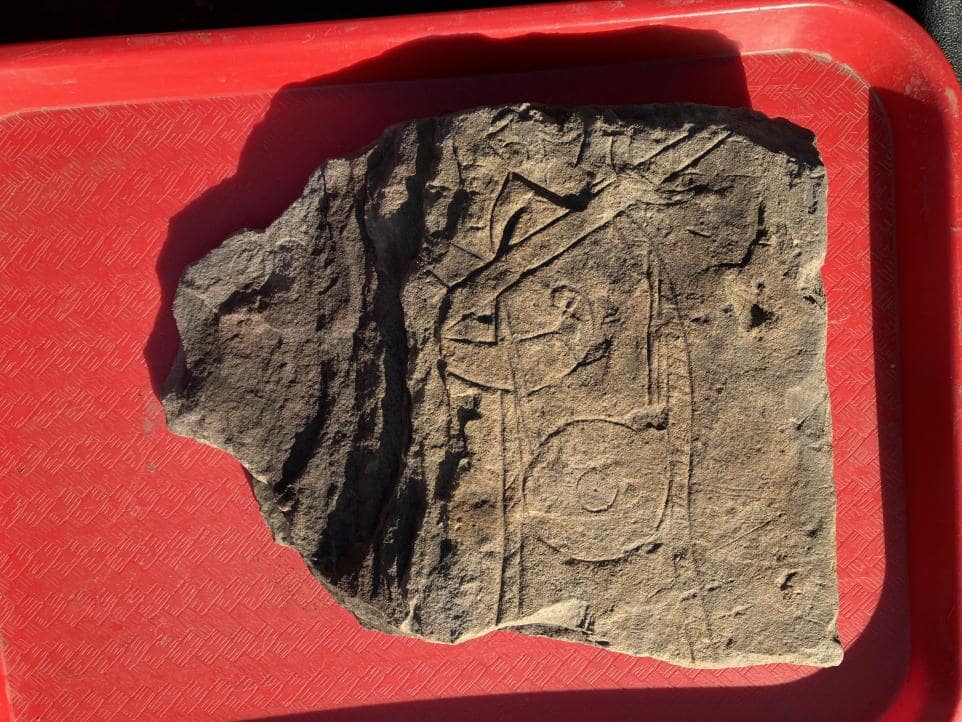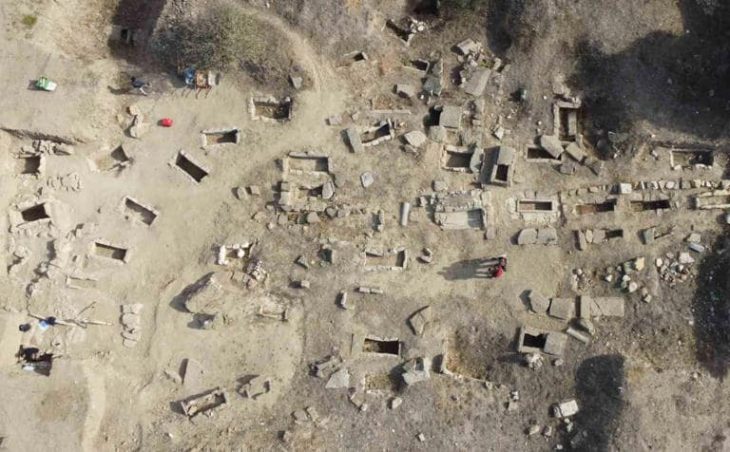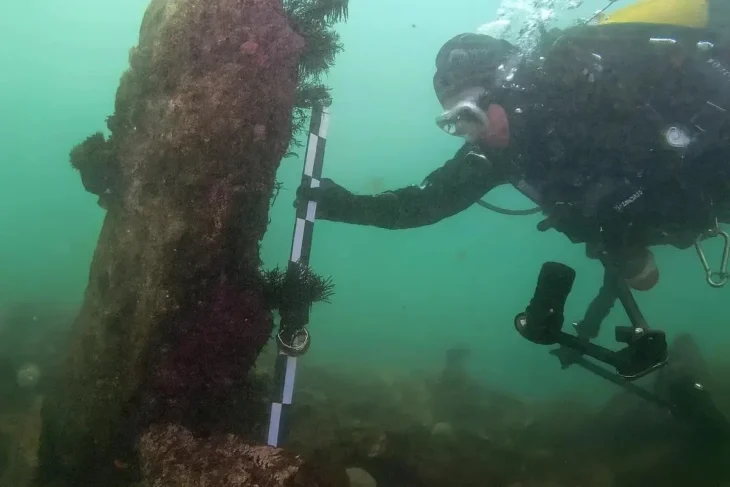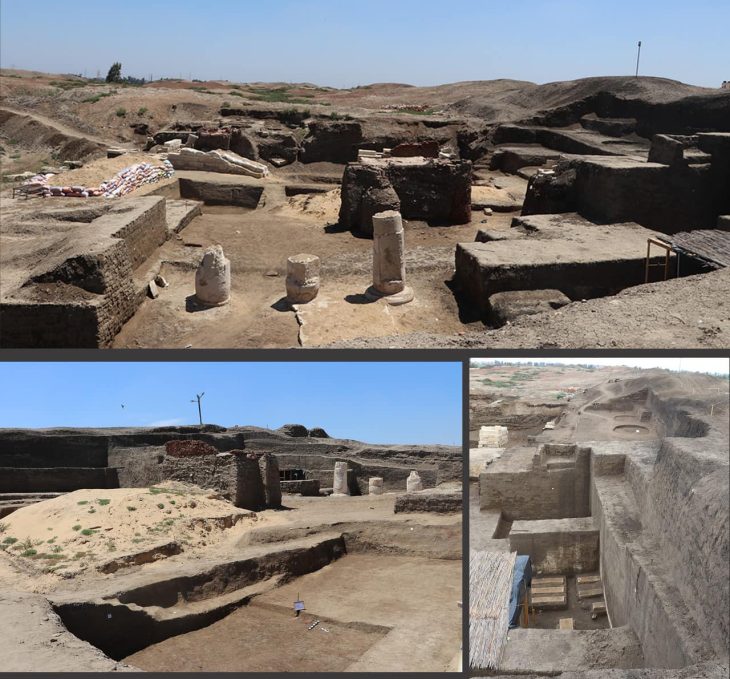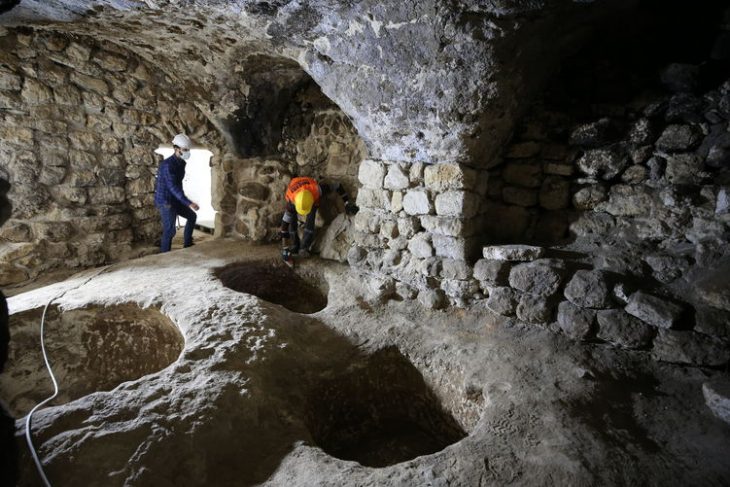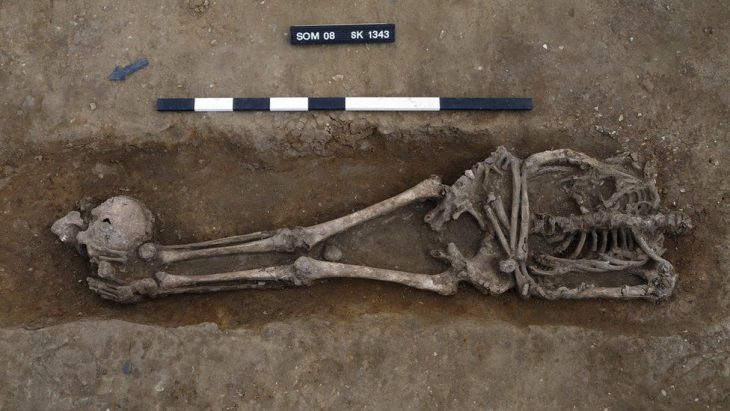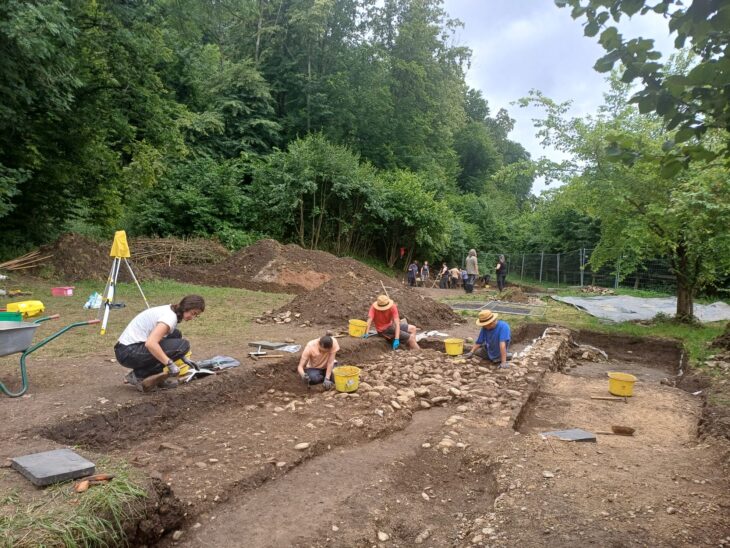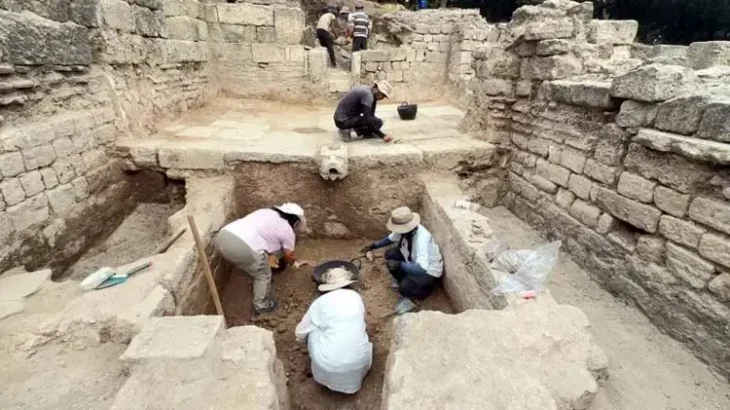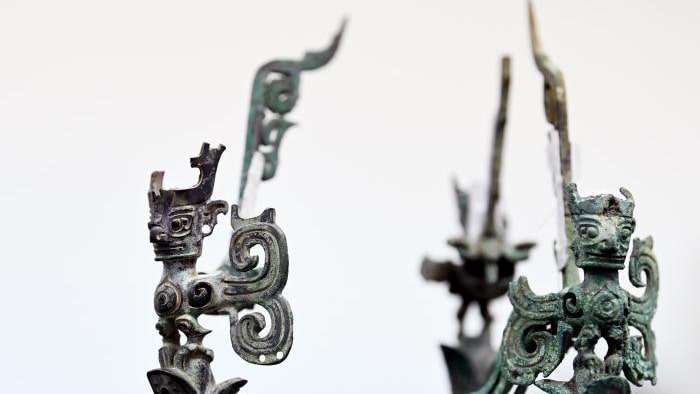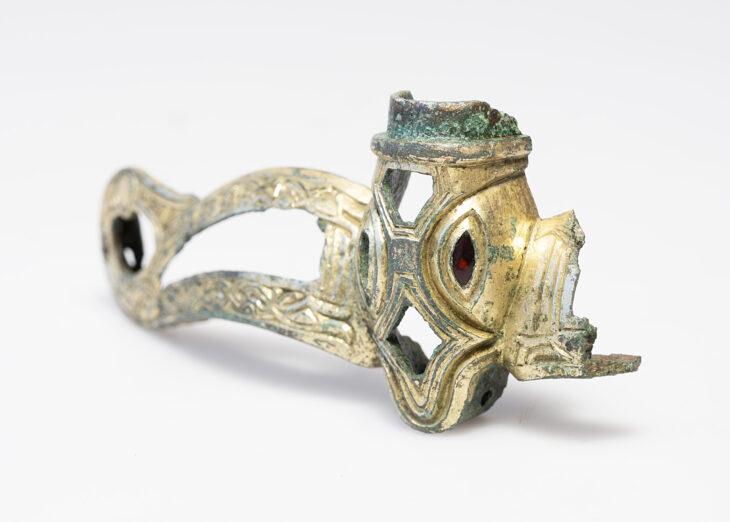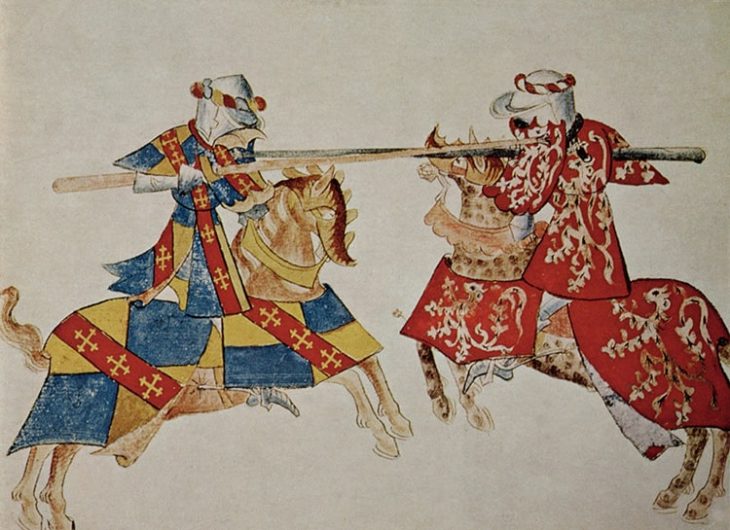An archaeological excavation in the churchyard at Govan Old Parish Church in Glasgow, a port city on the River Clyde in Scotland’s western lowlands, has uncovered a “remarkable” early medieval ‘Govan Warrior’ stone.
The early medieval carved stone is “quite unlike” any others discovered at the ancient site – which is celebrated for the richness of its Viking-age sculpture.
The stone portrays a man side-on carrying a round shield, a sharply pointed beard a flowing ponytail, and a shaft over their shoulder. The portrays, which could date to the 9th century, may represent links between Scotland’s Pictish rulers and Ireland. The Govan Warrior is unique within the existing collection due to its stylistic characteristics, which has drawn parallels with Pictish art.
The Excavations at Govan Old have been undertaken by the University of Glasgow under the leadership of Professor Stephen Driscoll, also a Trustee of Govan Heritage Trust, the custodians of Govan Old church since 2016. The Govan Warrior stone was discovered during a community fun day organized as part of Glasgow Doors Open Days Festival, co-ordinated by Glasgow Building Preservation Trust.
The oldest known Christian site in Glasgow, Govan Old was built in 1888 and stands on a religious site dating back to the sixth century. In 2007, Reverend Tom Davidson Kelly, a former minister of the church, described it as “possibly the most significant church in Glasgow, including the Cathedral”.
📣 Our WhatsApp channel is now LIVE! Stay up-to-date with the latest news and updates, just click here to follow us on WhatsApp and never miss a thing!!
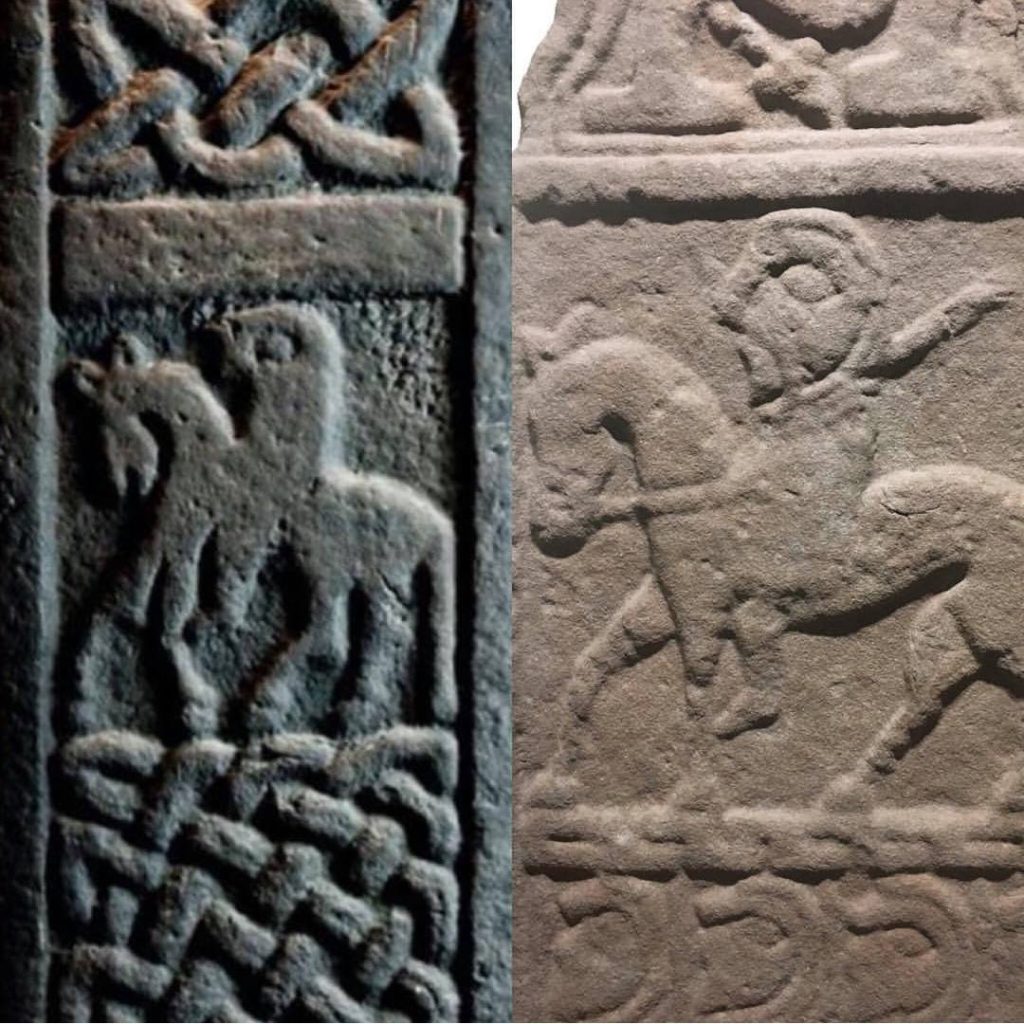
The Govan Stones Museum, which houses one of Europe’s finest collections of early medieval and Viking sculpture, is located in Govan Old. a group of more than 30 sculptures created by the lost Old Welsh-speaking British kingdom of Strathclyde, which ruled the Clyde Valley between the fifth and eleventh centuries AD.
The new find, currently dubbed the ‘Govan Warrior,’ was discovered on Saturday, September 16, 2023, and stands out even among the excellent existing collection, which includes the unique Govan Sarcophagus, the Govan Cross, and five hogback gravestones, a Scandinavian-style funerary monument dating from the 9th/10th centuries.
The Govan Warrior is unique within the existing collection due to its stylistic characteristics, which has drawn parallels with Pictish art and carvings from the Isle of Man. Unlike the other stones in the Govan collection, whose chunky style of carving is so distinctive that it has been described as a school of carving in its own right (the ‘Govan School’), the Govan Warrior is lightly incised, which may bring parallels with famous Pictish stones like the Rhynie Man from Aberdeenshire.
Professor Stephen Driscoll said: “It’s a style that makes us think both about the Pictish world and also about the Isle of Man and it’s interesting that we are halfway between these two places. Govan is the ideal place for these two artistic traditions or styles to come together.
“This is probably the most important find that I’ve made in my 30 years of working at Govan Old. The new stone is very exciting because it takes the collection to a different cultural place as it does not look like the heavier and chunkier ‘Govan School’ style. The new stone is much more delicate in its execution using finer shallow incisions.”
Cover Photo: The “Govan Warrior” stone. Image: Govan Heritage Trust

